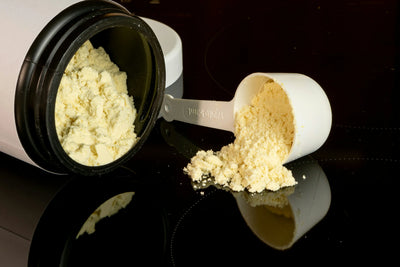Introduction
When you notice that your dog is scratching frequently, has reddened skin, and is even experiencing hair loss or dander, a mite infestation may be the culprit. Mites may be small, but they can cause your dog a great deal of discomfort. As a dog owner, you'll want to help your dog get rid of its troubles as soon as possible, restoring a healthy, shiny coat and a happy daily life.
Effective Mite Treatment Solutions for Your Dog
In this article, we'll give you details on how to revitalize your dog with a comprehensive and effective mite treatment plan through veterinary prescriptions, natural remedies, and daily care.

Veterinary Prescription: Professional Treatment for Fast Results
When your dog shows symptoms of a mite infection, the first step is always to consult a professional veterinarian. Your veterinarian will develop a personalized treatment plan based on your dog's specific condition to ensure that the treatment is both safe and effective. Here are a few common veterinarian-prescribed treatments:
Oral medications: eliminating mites from the inside out
Oral medications are one of the common options for treating mite infestations. For example, Ivermectin is a broad-spectrum anti-parasite medication that is highly effective against a wide range of mites. Your veterinarian will prescribe the appropriate dosage based on your dog's weight and health to ensure safe medication. In addition, isoxazoline-based medications, which have emerged in recent years, are administered in chewable tablets that not only taste dog-friendly, but also kill mites quickly. These medications are usually given once a month, making them convenient and effective, especially for busy pet owners.
Injectable treatments: a powerful program for stubborn cases
For severe mite infections, where oral medications may take longer to work, your veterinarian may recommend injectable treatments. Injectable medications can quickly enter your dog's bloodstream and work directly on the mites, providing quick relief from itching and inflammation. In cases that are difficult to treat over a long period of time, injection therapy can often bring unexpected results. However, this treatment requires professional veterinarians to ensure that the dosage is accurate and the dog has no allergic reaction.
Topical medications: localized treatment with precision
Topical medications are another highly effective form of treatment; Selamectin drops are preferred by many veterinarians, and can be applied to the skin on the back of the neck to kill mites and prevent other parasites such as fleas and heartworm. In addition, a number of topical sprays or creams can be applied directly to the infected skin area for quick relief of itching and inflammation. These products are usually fast-acting and are suitable for dogs with mild localized infections.
Medicinal shampoos: gentle cleansing and treatment aid
Medicinal shampoos are an important adjunct to the treatment of mite infections. Shampoos containing peroxides of benzoic acid or miconazole are effective in removing mites, dander and dirt from the surface of the skin while soothing skin inflammation. When using it, it is recommended to bathe your dog 1-2 times a week as directed by your veterinarian to ensure that the medication is fully effective. When bathing, remember to massage gently to allow the medication to fully contact the skin and leave it on for a few minutes before rinsing to enhance the effect.
Natural remedies: gentle and safe, close to nature
If you prefer natural remedies or want to provide your dog with additional care beyond veterinary treatment, here are a few methods that may help. These methods are gentle and safe, but it's best to consult with your veterinarian before using them to make sure they're appropriate for your dog's health condition.
Apple cider vinegar solution: a natural mite killer that's easy to use
Apple cider vinegar is a favorite among many pet owners for its natural antibacterial and miticidal properties. You can mix apple cider vinegar with water in a 1:1 ratio, fill a spray bottle and gently spray on your dog's skin, taking care to avoid eyes, nose and open wounds. Apply once a day for a few days and your dog's itching and skin redness will usually improve significantly. This method is simple and inexpensive, and is ideal for adjunctive treatment of mild infections.
Food-grade diatomaceous earth: physical insecticide, safe and efficient
Food-grade diatomaceous earth is a natural powder composed of tiny fossils that kills mites through dehydration. To use, simply sprinkle a small amount of diatomaceous earth gently onto your dog's coat, massage gently to bring it into contact with the skin, let it sit for a few hours and then brush it off with a soft brush. Repeat every 2-3 days until the infection is gone. It is important to note that diatomaceous earth must be chosen as food grade to ensure safety for your dog and yourself.
Coconut oil and essential oils: moisturize the skin and gently repel insects
Coconut oil is popular for its anti-microbial properties. You can take a small amount of coconut oil and gently apply it to your dog's infected skin to kill mites and moisturize dry skin at the same time. In addition, lavender or nymph oils are also effective in repelling mites, but the oils are more concentrated, so dilute and apply a small amount and make sure your dog doesn't lick it to avoid discomfort.
Daily care and prevention: prevention is better than cure
Treating a mite infestation is important, but preventing it from happening in the first place is just as critical. With routine care and preventative measures, you can greatly reduce your dog's risk of re-infection and keep him healthy for the long term.
Keeping the environment clean: cutting off mites' hiding places
A dog's living environment is a breeding ground for mites. Regular cleaning of kennels, mats and toys, washing with hot water and drying thoroughly can effectively kill latent mites and eggs. In addition, regular vacuuming of carpets and furniture to ensure that the corners of your home are dust-free can also reduce the spread of mites.
Regular grooming: early detection, early treatment
Taking a few minutes each day to brush your dog's coat not only enhances your bond with him, but also helps remove dead skin, dirt and potential mites. When grooming, pay attention to the condition of your dog's skin and consult your veterinarian as soon as possible if you notice any abnormality (e.g. redness, swelling or hair loss) to prevent the problem before it occurs.

Noora Allergy Support Health Supplement
Avoid contact with the source of infection: isolate the risk
Mites are contagious, especially when your dog comes into contact with other animals. Try to avoid letting your dog play with animals known to be infected with mites, especially at dog parks or boarding facilities. After going for a walk, check your dog's coat and skin to make sure you haven't brought back parasites.
Preventive medications: save for a rainy day
Some flea and tick preventive medications can also prevent mite infestations to some extent. These medications are usually administered once a month and are easy to administer and reliably effective. Consult your veterinarian to choose the right preventive product for your dog to keep him safe from parasites.
Mite infections are annoying, but with scientific veterinary treatment, gentle natural remedies and careful daily care, your dog is sure to be back in good health in no time. As a pet owner, your patience and care are your dog's greatest motivation to overcome the disease. Whether you choose a veterinary prescription or try natural remedies, please observe your dog's reaction closely and seek professional help when necessary. May your dog be free of mites soon and blossom with renewed vigor and happiness!
Comprehensive Guide to Dog Ear Mite Treatment
When you notice your dog scratching his ears, shaking his head, or even having strange black or brown discharge coming out of his ear canal, ear mites may be the culprit behind the problem. Although small, ear mites can cause your dog a lot of pain and even lead to serious ear infections. As a dog owner, you'll want to help your dog get rid of them as soon as possible and restore his ears to a fresh, comfortable state. This article will provide you with a detailed dog ear mites treatment strategy, covering diagnosis, treatment, home care and prevention, to help you and your dog to overcome ear mites, to meet a healthy and happy every day!
Diagnosis and Examination: Pinpointing Ear Mites
Treatment of ear mite infections begins with accurate diagnosis. Understanding the symptoms and consulting your veterinarian is the first step in helping your dog get rid of ear mites.
Symptom Observation: Spotting Abnormalities
Dogs with ear mite infections often exhibit telltale symptoms, such as scratching their ears frequently, shaking their heads vigorously, or even becoming agitated due to discomfort. You may notice redness and swelling of the skin in the ears, and black or brown discharge accumulating in the ear canal, sometimes accompanied by an odor. These discharges have the texture of coffee grounds and are “evidence” of ear mite activity. If you observe any of these signs, take your dog to the veterinarian as soon as possible to prevent the problem from worsening.
Veterinary examination: professional diagnosis
Veterinarians use specialized tools and methods to confirm the presence of ear mites. Typically, the veterinarian will use an otoscope to carefully examine your dog's ear canals and watch for signs of ear mites or inflammation. In some cases, the veterinarian may also take a small sample of earwax and look at it under a microscope to confirm the presence of ear mites and rule out other ear infections. A professional diagnosis not only identifies the cause of the disease, but also provides a scientific basis for subsequent treatment.
Treatment: scientific response, efficient eradication
Once an ear mite infection has been diagnosed, your veterinarian will develop a customized treatment plan based on your dog's condition. Here are a few common treatments to help you get your dog back on its feet.
Ear cleaning: paving the way for treatment
The first step in treating ear mites is often to thoroughly clean your dog's ear canals. Your veterinarian will use specialized ear cleaners to gently remove dirt, discharge, and ear mite residue from the ear canal. These cleaners not only improve the environment of the ear, but also enhance the effectiveness of subsequent medications. At home, you can gently wipe the outside of the ear canal with a cotton ball or gauze, but do not use cotton swabs as they may push dirt deeper into the ear canal or even damage the eardrum. When cleaning, do so gently, along with your dog's favorite snacks or petting to make him feel at ease.
Topical medication: killing ear mites with precision
Prescription medications are the mainstay of ear mite treatment. Drops or creams containing selamectin or moxidectin/imodium can act directly on ear mites to kill them quickly. These medications are usually simply applied to your dog's ear canal or the skin at the back of the neck, making them simple to use and highly effective. For mild infections, over-the-counter medications may also be a good option, but always consult with your veterinarian before use to make sure the product is safe and appropriate.
Oral or injectable medications: a comprehensive response to stubborn cases
For more severe ear mite infections, your veterinarian may recommend oral or injectable medications. Ivermectin is a broad-spectrum antiparasitic drug that is effective in removing ear mites when administered orally or by injection. However, it is important to note that certain breeds (such as Collies or Shepherds) may be sensitive to ivermectin and your dog's health must be evaluated by your veterinarian prior to use. In addition, newer oral medications, such as Aflana or Sarona, not only treat ear mites, but also prevent fleas and ticks, making them “multi-purpose”.
Environmental management: preventing ear mites from “coming back”
Ear mites are highly contagious and can spread not only from dog to dog, but also to other pets in the home. Therefore, all pets in the house should be examined and treated during the treatment period. At the same time, thoroughly clean your dog's beds, toys, grooming tools and other items, washing them in hot water and drying them at high temperatures to ensure that ear mites have nowhere to hide. Carpets and sofas at home also need to be vacuumed regularly to cut off the transmission of ear mites.
Home care and prevention: guarding ear health
Treating ear mites is only the first step. Scientific home care and prevention measures will keep your dog safe from ear mites and provide long-term ear health.
Regular cleaning: a good habit
Even after an ear mite infection is cured, it's still essential to clean your dog's ears regularly. Choose a mild ear cleaner recommended by your veterinarian and clean your dog's ears every 1-2 weeks to remove wax and dirt from the ear canal. While cleaning, remember to observe the condition of the ears and contact your veterinarian as soon as you notice any abnormality. Consistent cleaning over time will not only prevent ear mites, but also keep your dog's ears fresh and comfortable.
Avoid contact with the source of infection: prevention is better than cure
Ear mites are often spread through direct contact between dogs and other animals. When taking your dog outside, try to avoid close contact with animals suspected of being infected with ear mites, especially at dog parks or boarding facilities. When you get home, check your dog's ears and fur to make sure you haven't “accidentally brought back” the parasite.
Use preventive medications: plan ahead
Flea and tick preventive medications can also reduce the risk of ear mite infections to some extent. These medications are usually administered once a month and are easy to administer and reliably effective. Consult your veterinarian to choose the right preventive product for your dog and add a wall of protection to his health.
Precautions: Scientific treatment, safety first
During the treatment of ear mites, the following points need special attention to ensure the safety and efficacy of your dog:
Strictly follow the doctor's advice
Even if your dog's symptoms improve, it is important to follow your veterinarian's advice to complete the entire course of treatment to avoid “resurgence” of ear mites. Stopping the medication or adjusting the dosage without authorization may lead to treatment failure or even resistance.
Avoid self-medication
Some home remedies, such as the use of apple cider vinegar solution or olive oil, are popular on the Internet, but their effectiveness is not based on scientific evidence. Improper use may irritate your dog's ear canals or even aggravate the infection. Always consult your veterinarian before trying any home remedies.
Observe closely and follow up promptly
During treatment, closely observe your dog for any changes in symptoms. If the ear mite infection persists without improvement, or if abnormalities such as fever or loss of appetite occur, contact your veterinarian immediately. A timely follow-up visit can help your veterinarian adjust the treatment plan and ensure your dog's early recovery.

Although small, ear mites can cause your dog great discomfort. With scientific diagnosis, treatment and careful home care, you can help your dog quickly get rid of ear mites and return to a happy life. As a pet owner, your patience and care are the greatest guarantee for your dog's health. May this guide bring health and comfort to your dog so that he can greet you with fresh ears and a big smile every day!
Spotting and Treating Mites in Dogs: A Vet’s Advice
As a dog owner, you want your dog to be energetic and shiny every day. However, when you notice that your dog is scratching, shaking his head, or even experiencing skin abnormalities, a mite infestation could be a potential “troublemaker”. Mites may be small, but they can cause your dog a lot of pain and even lead to serious skin problems. Fortunately, with timely detection and treatment, your dog will be back on his feet in no time. In this article, we'll take you through how to recognize a mite infection in your dog, treat it scientifically, and prevent it effectively with professional advice from your veterinarian to keep your dog safe from mites!
How to Find out If Your Dog Is Infected with Mites?
Early detection of mite infection is the key to successful treatment. Through careful observation and professional diagnosis, you can quickly pinpoint the problem and get your dog the best possible treatment.
Observe the symptoms: Watch for “distress signals”
Dogs can't verbalize discomfort, but their behavior and physical changes do. Here are some common symptoms of mite infestation that you should pay special attention to:
Frequent scratching or head shaking: Your dog may scratch or shake his head, especially around the ears, as if trying to get rid of something.
Skin abnormalities: The skin is red, swollen or inflamed, and may even have small red spots or bumps that are rough and uneven to the touch.
Ear Canal Discharge: If the dog is infected with ear mites, a black or brown “coffee grounds” discharge may accumulate in the ear canal, sometimes accompanied by an odor.
Hair loss: Hair on the ears, face, neck, chest or abdomen may be patchy, revealing dry or inflamed skin.
If you notice any of these symptoms in your dog, don't ignore them; these may be signs that mites are at work.
Checking the skin: careful observation and initial judgment
At home, you can gently part your dog's fur and carefully inspect the skin condition, especially in areas where symptoms are evident. Healthy skin should be smooth and odorless, while mite-infected skin may have small granules, red spots or flakes. Dogs with ear mite infections may have visible dirt or discharge in the ear canal. When examining, move gently and use your hand to soothe your dog and keep him relaxed. If you suspect a mite infection, it's time to turn to a professional veterinarian next.
Veterinary diagnosis: scientific confirmation, precise treatment
Veterinarians are key players in confirming the diagnosis of a mite infestation. They will usually carry out an examination by the following methods:
Skin scraping: The veterinarian will gently scrape a sample from the surface of the dog's skin and look at it under a microscope to see if there are mites or their eggs.
Ear canal examination: for ear mite infections, the veterinarian will use an otoscope to look into the ear canal or take a sample of earwax for microscopic analysis.
A professional diagnosis not only confirms the presence of mites, but also rules out other skin conditions, ensuring a targeted treatment program.
Treatment: Scientific Response for Rapid Recovery
Once a mite infection has been diagnosed, your veterinarian will develop a personalized treatment plan based on your dog's condition. Here are a few common treatments to help your dog get out of discomfort as quickly as possible.
Topical treatments: pinpointing the mites
Topical medications are the first choice for treating mite infections. Drops or creams containing selamectin or moxidectin work directly on the skin to kill mites quickly. These medications are usually simply applied to the back of your dog's neck or the infected area, and are easy to administer and highly effective. For ear mite infections, your veterinarian will use a specialized ear cleaner to remove dirt from the ear canal before applying ear drops containing an anti-parasitic ingredient to ensure that the ear mites have no place to hide.
Oral or injectable medication: for severe infections
If the mite infestation is severe or widespread, your veterinarian may recommend oral or injectable medications. Ivermectin is a broad-spectrum antiparasitic drug that can be given orally or by injection to quickly eliminate mites. However, it is important to note that some breeds (such as Collies) may be sensitive to Ivermectin and a veterinarian must be consulted before use. In addition, newer oral medications such as Aflana are also effective in treating mites while preventing fleas and ticks.
Medicinal shampoos: gentle cleansing, complementary treatment
Medicinal shampoos are a powerful aid in the treatment of mite infestations. Shampoos containing peroxides of benzoic acid or miconazole effectively remove mites, dander and dirt from the surface of the skin while soothing inflammation. To use, it is recommended to bathe your dog 1-2 times a week, gently massaging the skin to allow the solution to take full effect. After bathing, dry your dog with a clean towel to create a comfortable environment for recovery.
Environmental management: cutting off the transmission pathway
Mites are contagious and may lurk in your dog's living environment. Therefore, items such as kennels, mats and toys must be thoroughly cleaned, washed with hot water and dried at high temperatures during the treatment period to ensure that the mites and their eggs are completely eliminated. Carpets and furniture in the home also need to be vacuumed regularly to minimize hiding places for the mites. If you have other pets at home, remember to check and treat them together to avoid cross-infection.
Preventive measures: Prevention is better than cure
Treating mites is important, but preventing them in the first place will help keep your dog healthy in the long run. Here are a few preventative measures to help you build a “health defense” for your dog.
Regular Cleaning: Maintaining a Sanitary Environment
Regular cleaning of your dog's ears, skin and environment is the cornerstone of mite prevention. Use a mild ear cleaner and clean your dog's ears every 1-2 weeks to remove wax and dirt. Dog kennels and toys should also be cleaned regularly to keep them dry and fresh to eliminate mite growth.
Avoiding contact with the source of infection: isolating the risk
Mites are often spread through direct contact between animals. When taking your dog outside, try to avoid close contact with suspected infected animals, especially at dog parks or boarding facilities. When you get home, check your dog's skin and ears to make sure you haven't “accidentally brought back” parasites.
Use preventive medications: plan ahead
Flea and tick preventive medications can also reduce the risk of mite infestation to some extent. These medications are easy and efficient to use once a month. Consult your veterinarian and choose the right preventive products for your dog to add a safeguard to his health.

Regular checkups: early detection, early treatment
Taking your dog to the veterinarian for regular health checkups is a smart way to prevent mite infections. Veterinarians can detect potential problems through professional examination and take measures at the early stage of infection to avoid deterioration of the condition.
Precautions: Scientific treatment, safety first
In the course of mite treatment, the following points need special attention:
Follow the doctor's advice: strictly follow the veterinarian's recommendations for the use of drugs, even if the dog's symptoms have improved, it is necessary to complete the entire course of treatment to avoid the mites “comeback”.
Avoid self-medication: Some home remedies, such as apple cider vinegar or olive oil, may seem gentle, but their effectiveness is not scientifically proven and they may irritate the skin or ear canal. Always consult your veterinarian before trying any home remedies.
Prompt follow-up: If your dog's symptoms continue to fail to improve, or if there are abnormalities such as loss of appetite or depression, contact your veterinarian immediately to adjust the treatment plan.
Mite infestation may temporarily deprive your dog of its former vigor, but with careful observation, scientific treatment and long-lasting prevention, your dog is sure to regain its health and happiness. As a pet owner, your love and patience are the greatest motivation for your dog to overcome the disease. May this veterinary advice be of help to you and your dog, so that with healthy skin and bright eyes, he can continue to accompany you in every good time!





